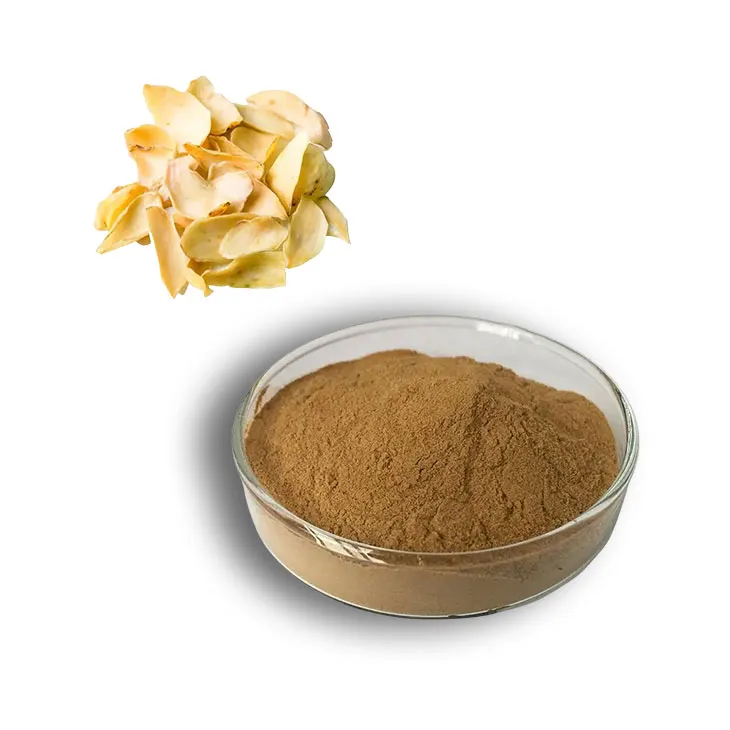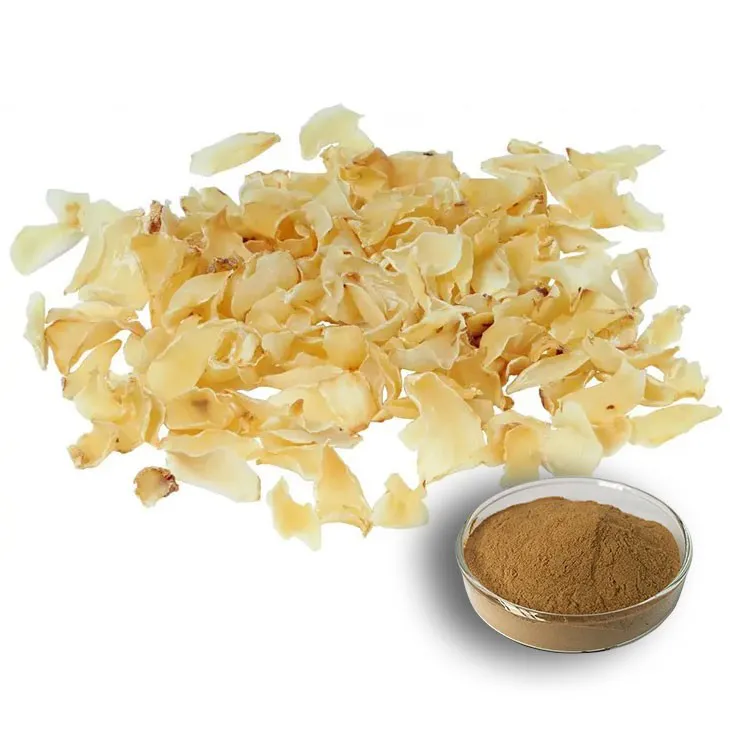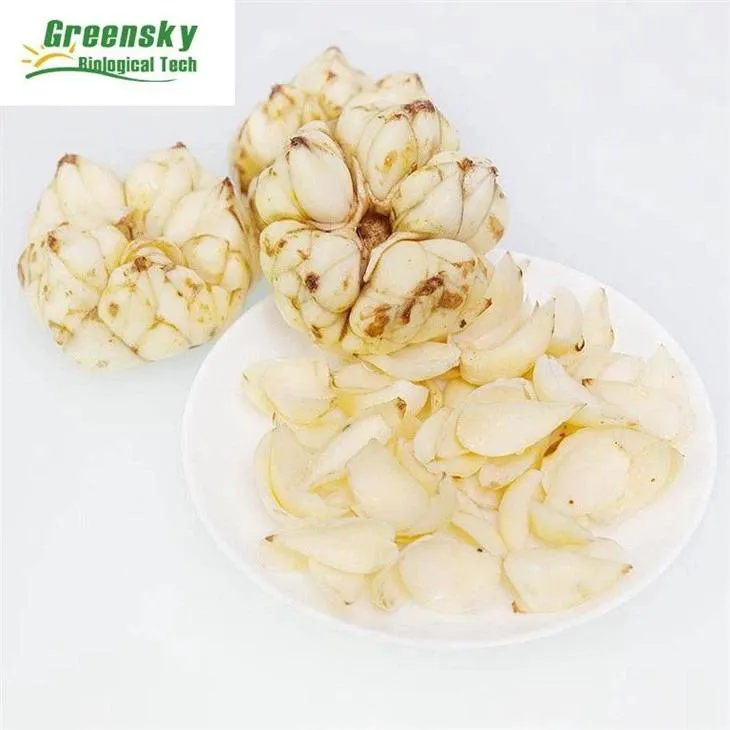- 0086-571-85302990
- sales@greenskybio.com
The best sources of natural lily extracts.
2024-11-30

Introduction
Lilies are not only known for their aesthetic beauty but also for their potential in traditional medicine and cosmetics. The natural extracts from lilies are rich in various beneficial compounds. In this article, we will explore the best sources of natural Lily extracts, including different lily species and the regions where they grow best, as well as sustainable harvesting methods.

Different Lily Species Rich in Beneficial Compounds
Lilium candidum
Lilium candidum, also known as the Madonna lily, has a long history of use in traditional medicine. It contains compounds such as alkaloids, flavonoids, and saponins. Alkaloids in Lilium candidum may have potential medicinal properties, for example, they could potentially act as anti - inflammatory agents. Flavonoids are well - known for their antioxidant capabilities, which can help protect cells from oxidative damage. Saponins might have a role in improving skin health when used in cosmetics.
Lilium longiflorum
Lilium longiflorum, the Easter lily, is another important source of Lily extracts. It is rich in polysaccharides, which are large carbohydrate molecules. These polysaccharides can contribute to the moisturizing properties of Lily extracts when used in skincare products. Additionally, Lilium longiflorum contains certain phenolic compounds that may have antimicrobial properties, making it suitable for use in products where preventing microbial growth is desired, such as some natural cosmetics.

Regions Where Lilies Grow Best
Asia
Asia is home to a diverse range of lily species. In China, for example, there are many regions with ideal growing conditions for lilies. The cool - temperate and subtropical mountainous areas in China provide a suitable climate, soil, and altitude for lilies to thrive. The lilies grown in these areas often have high purity and potency due to the clean environment and specific ecological conditions. In Japan, certain lily species are also cultivated, and the meticulous Japanese gardening techniques can enhance the quality of the lilies. The humid climate in some parts of Japan is beneficial for the growth of lilies, resulting in lily extracts with unique properties.
Europe
In Europe, countries such as France and Italy have a long - standing tradition of lily cultivation. The Mediterranean climate in parts of France and Italy provides warm, dry summers and mild, wet winters, which is favorable for some lily species. The soil in these regions, rich in certain minerals, can contribute to the growth of healthy lilies. For example, the chalky soils in some areas of France are suitable for Lilium candidum. The long - term cultivation traditions in Europe also mean that growers have extensive experience in maximizing the quality of lilies, resulting in high - quality lily extracts.

Sustainable Harvesting Methods
Sustainable harvesting of lilies is crucial to ensure the long - term availability of these natural resources for lily extracts. One important method is selective harvesting. Instead of harvesting all the lilies in a given area, only mature plants or those with a certain density are selected for harvesting. This allows the remaining lilies to continue growing and reproducing, maintaining the overall population. For example, in a lily field, harvesters can choose to pick only the lilies that have reached full bloom and have a certain stem thickness, leaving the younger and smaller plants to grow further.
Another aspect of sustainable harvesting is proper timing. Harvesting should be done at the right time of the year when the concentration of beneficial compounds in the lilies is at its peak. For different lily species, this time may vary. For instance, for some lilies, it may be best to harvest in the late spring or early summer when the flowers have just fully opened and the active compounds are most abundant. Additionally, sustainable harvesting also involves minimizing damage to the surrounding environment during the harvesting process. This can include using appropriate tools and techniques to avoid disturbing the soil and other plants in the area where the lilies are growing.

Conclusion
In conclusion, understanding the best sources of natural lily extracts involves considering different lily species such as Lilium candidum and Lilium longiflorum, the regions where they grow best like Asia and Europe, and implementing sustainable harvesting methods. By taking these factors into account, we can ensure the availability of high - quality lily extracts for use in traditional medicine and cosmetics while also protecting the natural environment and the long - term viability of lily populations.
FAQ:
Question 1: Which lily species are commonly used for natural lily extracts?
Lilium candidum and Lilium longiflorum are two common lily species used for natural lily extracts as they are rich in beneficial compounds.
Question 2: Why are certain regions important for obtaining high - quality lily extracts?
Certain parts of Asia and Europe are important for obtaining high - quality lily extracts because these are the regions where lilies grow best. The environmental conditions in these areas contribute to the purity and potency of the extracts.
Question 3: What are the sustainable harvesting methods for lily extracts?
Some sustainable harvesting methods include proper timing of harvesting to allow the lilies to reproduce and replenish their populations. Also, only taking a certain percentage of the available lilies in a given area can ensure the long - term availability of these natural resources. Additionally, promoting the growth of lilies through proper cultivation techniques in their natural habitats can be part of sustainable harvesting.
Question 4: What are the benefits of using lily extracts in traditional medicine?
Lily extracts have been used in traditional medicine for various reasons. They may contain compounds that have anti - inflammatory, antioxidant, or other medicinal properties. However, specific benefits can vary depending on the type of lily and the extraction method.
Question 5: How are lily extracts used in cosmetics?
Lily extracts are used in cosmetics for their fragrant properties as well as potential skin - enhancing qualities. They may be added to products like creams, lotions, and perfumes to provide a pleasant smell and potentially beneficial effects on the skin, such as moisturizing or anti - aging effects.
Related literature
- The Utilization of Lily Extracts in Modern Medicine"
- "Sustainable Harvesting of Lilies for Extract Production"
- "Lily Species and Their Extract Potency"
- ▶ Hesperidin
- ▶ Citrus Bioflavonoids
- ▶ Plant Extract
- ▶ lycopene
- ▶ Diosmin
- ▶ Grape seed extract
- ▶ Sea buckthorn Juice Powder
- ▶ Fruit Juice Powder
- ▶ Hops Extract
- ▶ Artichoke Extract
- ▶ Mushroom extract
- ▶ Astaxanthin
- ▶ Green Tea Extract
- ▶ Curcumin
- ▶ Horse Chestnut Extract
- ▶ Other Product
- ▶ Boswellia Serrata Extract
- ▶ Resveratrol
- ▶ Marigold Extract
- ▶ Grape Leaf Extract
- ▶ New Product
- ▶ Aminolevulinic acid
- ▶ Cranberry Extract
- ▶ Red Yeast Rice
- ▶ Red Wine Extract
-
Buckthorn bark extract
2024-11-30
-
Hawthorn powder
2024-11-30
-
Honeysuckle Pollen
2024-11-30
-
Lavender Extract
2024-11-30
-
Rose Hip Extract
2024-11-30
-
Berberis aristata Extract
2024-11-30
-
Phellodendron Extract
2024-11-30
-
Saw Palmetto Extract
2024-11-30
-
Acerola Extract
2024-11-30
-
Black Pepper Extract
2024-11-30





















